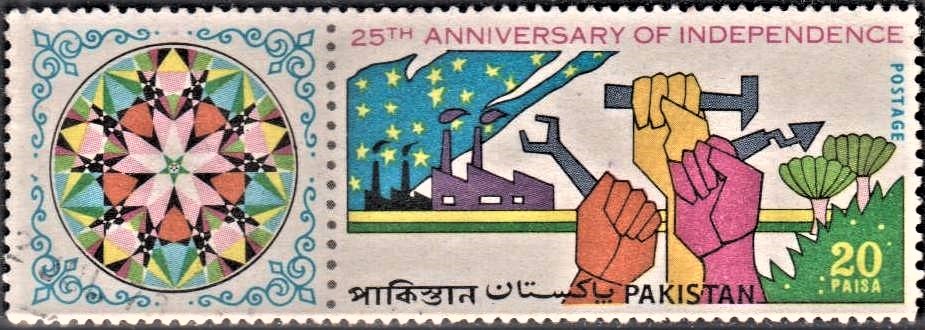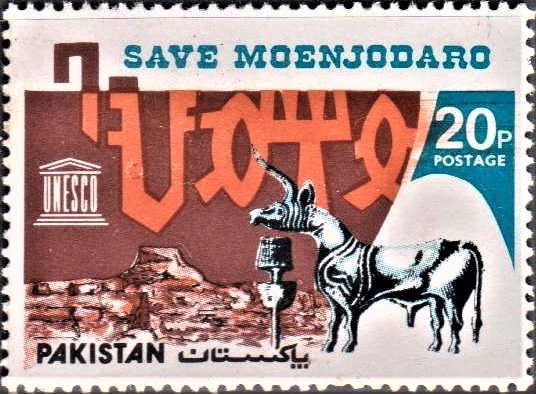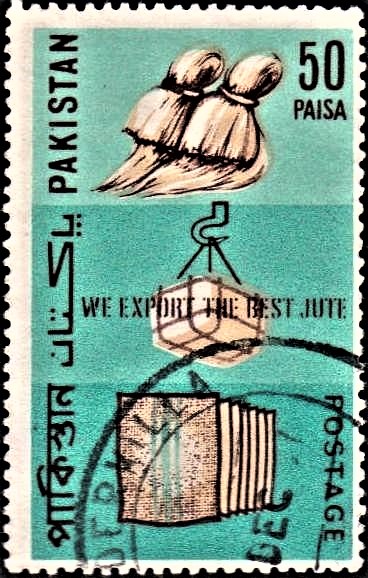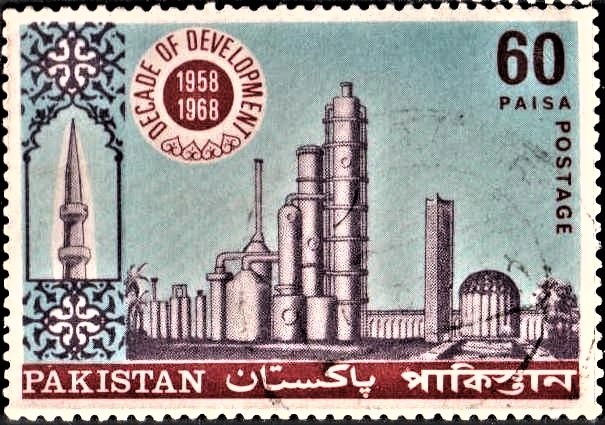
Pakistan on ‘Venice on Peril’
A commemorative postage stamp on the “Save the Artistic Heritage of Venice“ :
 Issued by Pakistan
Issued by Pakistan
Issued on Feb 7, 1972
Design : The format of the stamp is horizontal. A turquoise blue frame, on the left and bottom side of the stamp, encloses a view of Venice. The caption ‘Venice on Peril’, lying below the illustration, and the words ‘Pakistan‘ in Urdu, Bengali, and English on the left side of the stamp, are in reverse against a turquoise blue background. The symbol of UNESCO on the top of the turquoise panel on the left and the word ‘Paisa’ value ’20’ and the word ‘Postage’ at the bottom of the stamp on the left are in black.
Type : Stamp, Postal Used
Denomination : 20 Paisa
Colour : Red, Yellow, Blue and Black
Size of stamp : 50.8 x 35.2 m.m.
Size of print : 47.8 x 32.2 m.m.
Perforation gauge : 13 x 13 (c)
Quantity printed : 10,00,000
Number of Stamps in each sheet : 50
Process of printing : Four colour Litho
Printers : The Pakistan Security Printing Corporation Ltd., Karachi
About :
- Oh Venice! Venice! when thy marble walls
Are level with the waters, there shall be
A cry of nations o’er thy sunken halls.
A loud lament along the sweeping sea!
“Ode on Venice“ – Byron - VENICE (VENEZIA), a city and seaport of Italy, occupying one of the most remarkable sites in the world, at the head of the Adriatic, between the mountains and the sea, lies in that part of the Lombard plain which is known as the Veneto. The whole of this plain has been formed by the debris swept down from the Alps by the rivers. On a group of mud banks about the middle of the lagoon of Venice stands the city of Venice. The soil is an oozy mud. The whole site of Venice is dominated by the existence of one great main canal, the Grand Canal, which, winding through the town in the shape of the letter S, divides it into two equal parts. It is usually affirmed that the State of Venice owes its origin to the barbarian invasions of north Italy; that it was founded by refugees from the mainland cities who sought refuge from the HUNS in the impregnable shallows and mud banks of the lagoons. Venice, like Rome and other famous cities, was an asylum city.
- The continuous growth of Venice can be traced through the successive styles of Byzantine, Gothic, early Renaissance and late Renaissance architecture. The two most striking buildings in Venice, St. Mark’s and the Doge’s Palace, at once give us an example of the two earlier styles, the Byzantine and the Gothic. Both are so capricious in development and in decoration that they may more justly be considered as unique specimens rather than as typical examples of their respective styles. Fine examples of Venetian Byzantine palaces – at least of the facades – are still to be seen on the Grand Canal and in some of the small canals. Besides all this, Venice is rich in Gothic Architecture, the Ducal Palace, Gothic Churches and Palaces, modern buildings, paintings, institutions and libraries.
- According to the special study made by UNESCO, 47 per cent of Venice‘s buildings are in need of repair, 16 per cent are gravely dilapidated and 50 per cent are damp-infested. The renovation of housing in Venice is an urgent task, but the cost will be enormous.







